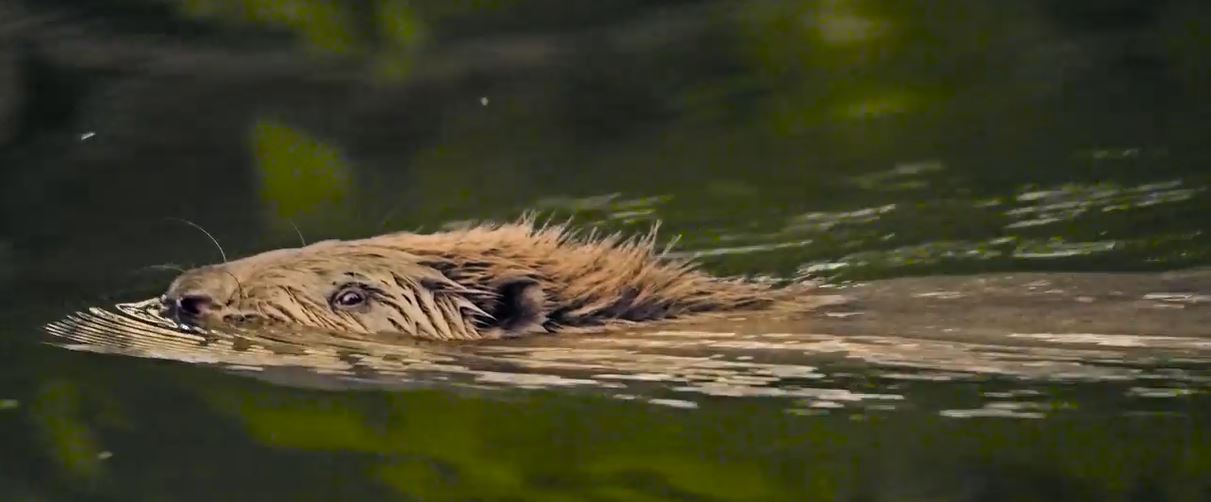About Beavers: Appearance, Biology, Life Cycle, Habitat, Diet, And Behavior

Most people don't necessarily expect to see a beaver on their property and this is typically a reasonable expectation. Depending on the part of the country you live in and the surrounding land, however, a beaver may decide to make your property home. By learning about beavers, you can recognize the signs of these animals on your property and have a better idea of what to do about their presence.
Appearance
Beavers are one of the largest rodents living today. They are known for their flattened tails covered in scales, webbed feet, and thick fur. The fur is waterproof to encourage their time in the water and while swimming, they use their flattened tail as a rudder. Beavers also have a transparent eye membrane and can close their ears and nostrils while swimming. These animals have strong teeth and powerful jaws that let them bring down trees to build dams and create their homes. The upper incisors are usually between 20 and 25 millimeters long. They continue to grow throughout the beaver's entire lives.
There are two varieties of beavers, the Eurasian beaver and the American beaver. Eurasian beavers are typically between 29 and 53 inches long and weigh 29 to 77 pounds. American beavers, which you are much more likely to find on your property, are typically 23 to 39 inches long and about 60 pounds.
All beavers have scent glands at the base area of their tails. These are known as castors and secrete castoreum, a must-like substance that they use to mark their territory.
Biology And Life Cycle
Mating season occurs in winter between January and March. Eurasian beavers are pregnant for 60 to 128 days before giving birth to between one and six kits. At birth, Eurasian beavers weigh between 8.1 and 22 ounces and they will wean at about six weeks old.
American beavers have a less varied gestational period of between 105 and 107 days and they only give birth to between one and four kits at a time. These kits are typically between 9 and 21 ounces and will be weaned at two weeks or so.
A beaver kit is able to swim a mere 24 hours following being born. When kits reach about two years old, they leave their parents' lodge to create their own. They will find a monogamous mate around age three.
Habitat
Beavers only live in areas with water since they need it to survive. They will never live in deserts or the northern portions of Canada. They can, however, be found by freshwater swamps, marshes, rivers, lakes, and ponds. Although beavers were once found across Asia and Europe, there are now only smaller numbers in central Russia, Poland, France, Germany, and southern Scandinavia due to hunting.
These rodents build themselves homes known as lodges. These are small dome-shaped dwellings made using moss, grasses, and woven sticks plastered with mud. The largest lodges can measure 3 feet high inside and 8 feet wide. They will typically build their lodges along the bank or shore of a body of water, slightly above the water line. They even include underwater backdoors to give beavers immediate access to swimming. The lodges frequently have two dens inside; one is designed for drying off and provides the underwater entrance while the other is dryer and designed for socialization and living.
Diet
In addition to using trees to build their homes, beavers also eat these plants. Beavers are one of the few animals capable of digesting cellulose. As such, they will eat bark, roots, and leaves from poplar, maples, willows, and aspen trees in addition to various aquatic plants.
Behavior
Beavers are nocturnal animals and while awake, they spend the majority of their time building and eating. They do not hibernate, remaining active all year round. They are known for making dams, which they do to create ponds, which are their ideal areas to live. To make a dam, beavers cut trees down with their trees, weave branches together, and then hold and waterproof everything with mud. Dams may be as tall as 6.5 feet high and several meters long. The largest dam is 850 meters long and in Wood Buffalo National Park in Alberta, Canada. Beavers may also use their digging skills to create canals that bring water to the area they feed.
These are one of the social types of rodents and a group of beavers is known as a colony. Each lodge typically houses a monogamous beaver couple, their young children, and their yearlings that were born the year earlier.
As expected, beavers are excellent swimmers. Their tails have a rudder-like design and their feet are webbed, helping them travel 5 mph through the water. They are able to keep themselves underwater 15 minutes at a time. If a predator is nearby, beavers will startle them by slapping the water with their tiles. They then use this distraction to dive and swim away.
Read the Pest Wildlife Home Page page for helpful information and to learn more about About Beavers: Appearance, Biology, Life Cycle, Habitat, Diet, And Behavior

